The Best Parks in Barcelona
The Catalan Capital is home to some seriously fabulous restaurants, attractions and cultural monuments. But this amazing city is more than just an urban jungle. Let’s explore the great outdoors through the best parks in Barcelona.
There are a number of gorgeous green spaces to explore, more often than not completely for free. So, what are you waiting for? Let’s check out the best parks in Barcelona!
See also: Where to go Swimming in Barcelona and Surrounds
The best parks in Barcelona
Ciutadella Park
First up on our list is the gorgeous Ciutadella Park in the heart of the city. This park is the biggest in the whole city and is therefore the perfect location to engage in some long and beautifully scenic strolls. The Ciutadella Park is, for many, somewhat of an oasis of calm amidst the hustle and bustle of the city.
The lush green grass, phenomenal fountain, pretty lake, and interesting attractions are just some of the factors that make a visit here so enticing.
Not only is the park itself a wonder worth exploring, you will also find the Barcelona zoo and the assembly hall of the Parliament of Catalonia, on site. What a treat!
Be sure to visit the park’s lake. Here you will be able to board some row boats and take in the scenery from the water. There is a lot of wildlife to observe here, such as the many adorable ducks that inhabit the area.
Ciutadella Park in Barcelona
Park Güell
Next up on our list is certainly one of the most famous attractions in Barcelona. Park Güell is, as of 1984, an official UNESCO World Heritage Site, and no wonder! This magical park was designed by the world-famous Antoni Gaudi: architect of none-other than the iconic Sagrada Familia. Here, you will surely be amazed by the winding walkways and vibrant mosaic tiles as you stroll through this magnificent green space.
Park Güell is home to some of the best panoramic views of the city: from the mountains to the sea beyond. This park is super unique, with Gaudi’s influence subtly left to be discovered as you make your way around.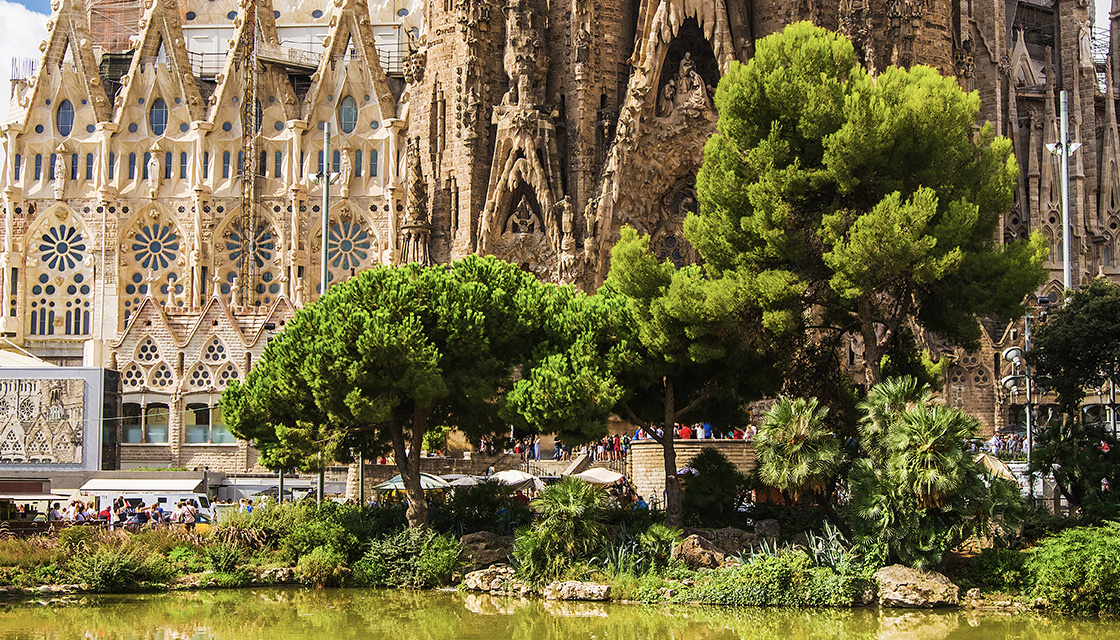
Bear in mind: this park is not free as Ciutadella Park is, for example. However, a visit to Park Güell is well worth the entrance fee, as you can easily spend hours here checking out hidden gems or following secret paths. Alternatively, why not visit on Sunday or Wednesday when entrance is free? What’s not to love!
Search for tickets to Park Güell here.
Park Güell in Barcelona
Parc del Laberint d’Horta
Located on the outskirts of the city, in the peaceful Horta district, you will find the super romantic Parc del Laberint d’Horta. The park’s main attraction is its famous labyrinth, designed in 1891 by Italian architect Domenico Bagutti. This labyrinth is rather large, with a lovely pond and statue of Greek god, Eros, at its centre.
Why not take the family with you for a fun day out? Get lost and find your way around until your heart’s content!
Besides the labyrinth, the park is home to some pretty ponds, flowing streams and towering trees to take in for yourself.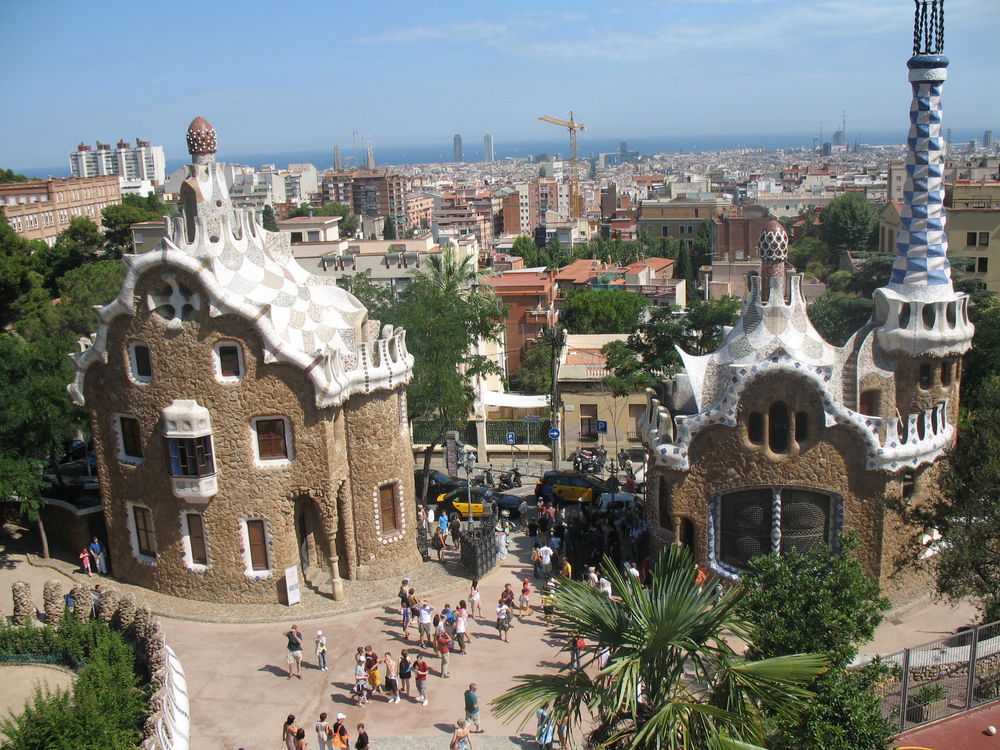
Better yet: entry is inexpensive at just €2.23 a ticket or free on Sunday or Wednesday, just as at Park Güell!
Parc del Laberint d’Horta in Barcelona
Parc de Cervantes (Cervantes Park)
Last but not least on our list of recommendations is the gorgeous Cervantes Park. Located in the Les Corts district, this brilliant green space is less popular and therefore a great place to really relax if you’re looking for a more calming vibe away from all the tourists. Enjoy a picnic on the grounds or catch up with friends somewhere on the expansive grounds.
Pro tip: The best time to visit this park is in the springtime when its 10,000 rose bushes bloom in all their beauty. Whilst they not only look magnificent, take it from us, they smell even better!
Parc de Cervantes (Cervantes Park)
So, there you have it! The best parks in Barcelona. We’ve hoped you’ve enjoyed this blog and that you keep an eye out for some of these stunning green spaces on your travels.
For more things to do in Barcelona, check out the below:
-
Where to Find the Best Bravas in Barcelona
-
Eating Out in Barcelona for Under 10 Euros
-
Cheapest Bars in Barcelona to Drink on a Budget
-
Budget-Friendly Boat Trips in Barcelona
-
A Guide to Visiting Sagrada Familia in Barcelona
Author
- Apartment Barcelona
Barcelona, Spain
View Larger Map
Similar travel tips
Explorer Videos
More travel tips
Best parks & gardens in Barcelona, Spain
A CURATED LIST OF THE BEST BARCELONA GARDENS
Being a densely populated and tightly built European city, about 3.5% of the surface of Barcelona are green areas. About half of it belong to the Collserola forests, and the rest is urban greenery – over 75% in public spaces (data from this study from 2015 in Catalan).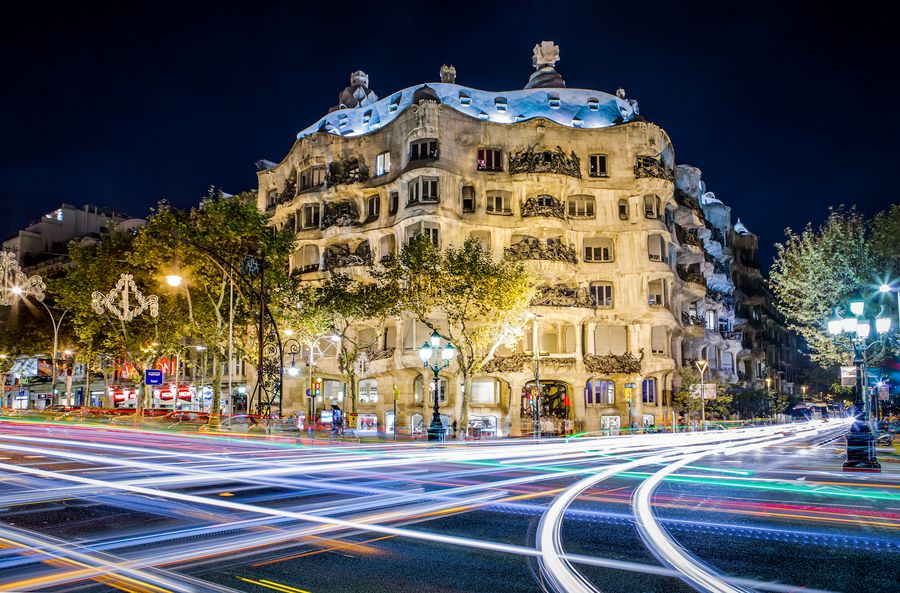
The city features some 90 parks and gardens. Two of them qualify as “forest parks”: large sections of the city that can include smaller parks and even residencial areas and other facilities within it. They are the Parc de Collserola and the Parc de Montjuic.
There’s a dozen of historical parks, and a handful of themed botanical gardens. And the rest are urban parks and public landscaped interiors of city blocks. And almost 200 trees are included in the Catalog of Trees of Special Interest for its age, uniqueness, historical value or size.
All this makes Barcelona an excellent destination for parks and botany lovers. So in this post we have selected the best botanical gardens and parks to visit, so you can add some greenery and color to your trip. Note: Unless otherwise stated, these parks and gardens are open every day during normal business hours and the entrance is free of charge.
Most beautiful parks of Barcelona
Parc de la Ciutadella
The largest park of Barcelona (17.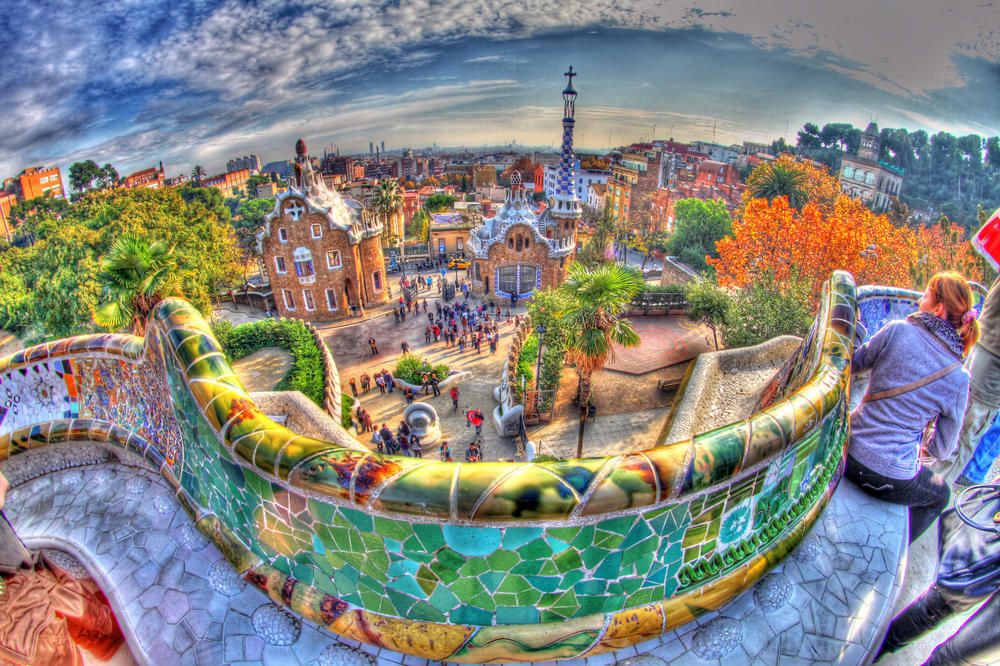
After the demolition of the fortress, the architect Josep Fontsere planned this garden after the Parisian Jardins du Luxembourg. In 1888 the park hosted the first world fair of Barcelona, and some of the structures of the fair are still in place.
There’s over 100 different types of trees and bushes, many of them planted over 100 years ago. Some are also included in the city catalog of trees of special interest: a maclura, some taxodiums, an acacia and a quercus polymorpha. In the zoo lives also the largest urban colony of grey herons in Europe, and they can often be seen in the park lake.
LOCATION: Between the Born district and the Eixample, very close to the Picasso Museum and the Arch of Triumph.
Learn more about it >>
Park Guell, the Gaudi Park
In 1900 the aristocrat and businessman Eusebi Guell asked his best friend and favorite architect Antoni Gaudi to help him designing the urban planning and landscape of a housing development project he had in mind.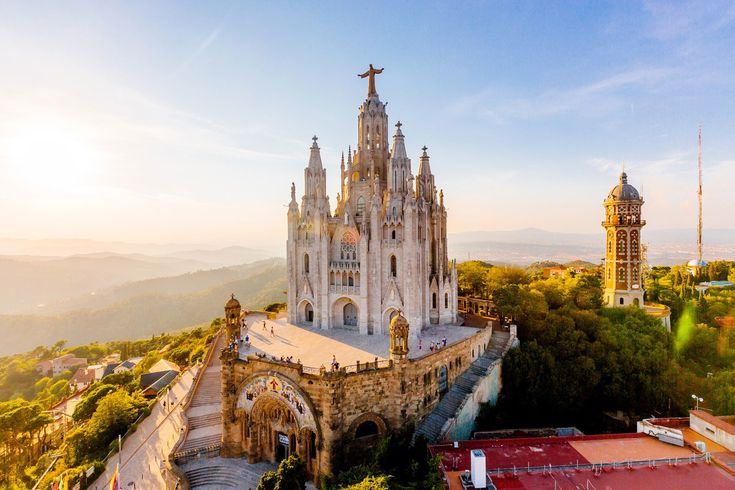
PRIVATE PARK GUELL GUIDED TOUR
Gaudi had time to build a monumental main entrance flanked by colorful pavilions in front of a grand staircase decorated with fountains, a columns room, a plaza surrounded by a mosaic bench and a few viaducts.
In the 1900’s the heirs of Count Guell sold the land to the Barcelona city council, and so what had been a private property became a public park. Nowadays, the access is paid except for the neighbors, that are entitled to a special pass. It is definitely one of the most famous parks in Barcelona, and a top must-see site.
LOCATION: Top of the Gracia district.
Plan your visit >>
Buy tickets here >>
Parc del Laberint d’Horta
The marquis Joan Antoni Desvalls hired the Italian architect Domenico Bagutti in 1791 to design a neoclassic garden with a cypress maze as its main feature. In the mid-1800’s architect Elies Rogent added a romantic garden.
BARCELONA CUSTOM GARDEN TOURS
The park was visited by the Spanish royals: Charles V, Ferdinand VII and Alfons XIII.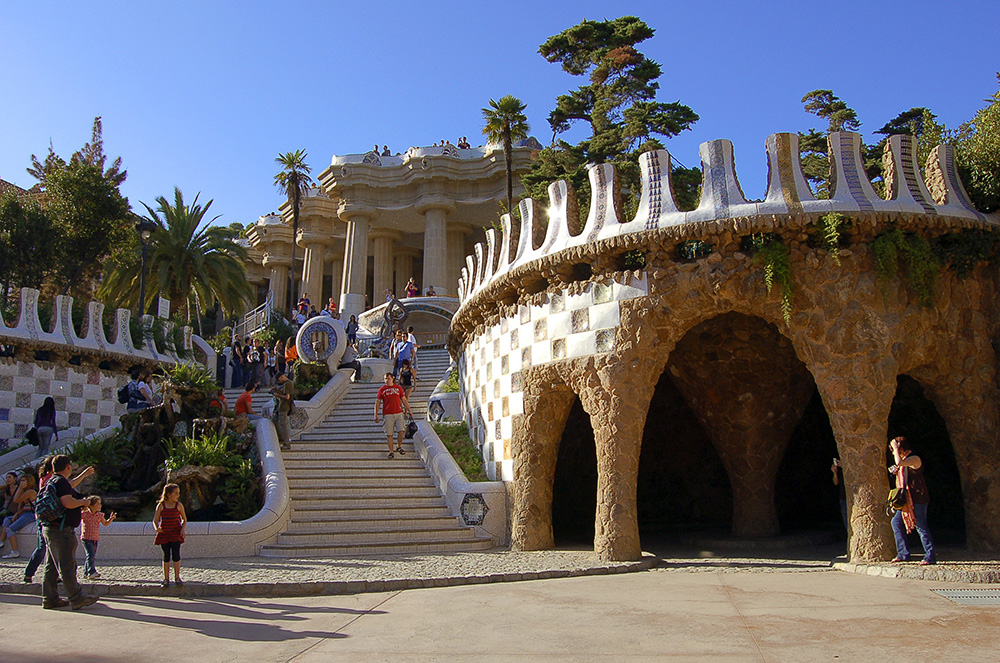
The cypress labyrinth has one single entrance and one exit. The goal is finding the sculpture of Eros located in the middle before finding the way out. It’s large enough to get lost in it for a while, just enough to feel the thrill of adventure without risking having to spend the night in there.
LOCATION: Top of the Horta district.
Learn more about it >>
Jardins Laribal
This flank of the Montjuic Hill was once a fruit tree farming land and a picnic area. In 1922 the French landscape artist Forestier and his local assistant Rubió i Tudurí were asked to plan a park in views of the upcoming World Fair of 1929.
TAKE OUR MONTJUIC WALKING TOUR
These quiet gardens include a cypress tree gazebo, a small rose garden, pergolas covered with vines, sculptures and steps inspired in those from the Generalife Gardens in Granada (Spain).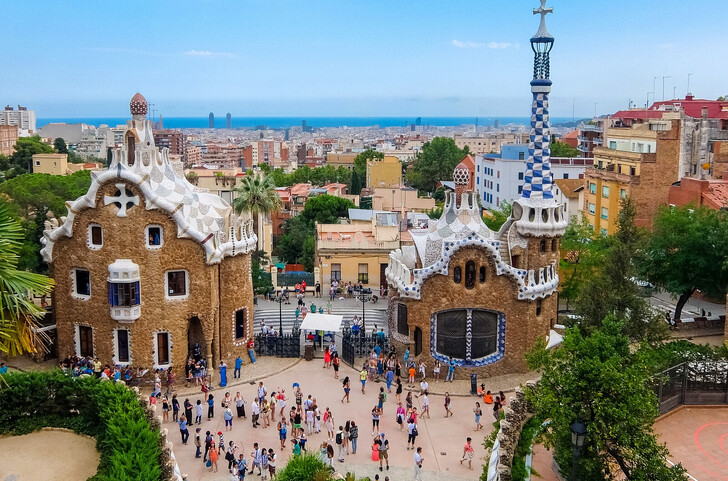
LOCATION: Hill of Montjuic. Pair it with a visit to the nearby Miro Foundation or plan to eat at the restaurant of the park.
Learn more about it >>
Jardins de Mossen Cinto Verdaguer
Probably one of the most beautiful parks in Barcelona, specially in March/April and again July through September, the peak of its blooming season (and a favorite spot for wedding pictures)
MONTJUIC, SAGRADA FAMILIA AND PARC GUELL TOUR
Every year over 80.000 bulbs of different species are planted here, between grass patches and water ponds with water lilies.
LOCATION: Hill of Montjuic. Pair it with a visit to the nearby Miro Foundation, the Montjuic Cable Car or the Montjuic Castle.
Learn more about it >>
Jardins de Pedralbes
A classic garden, with French and British influences, built around a mansion called to be the Royal accommodation of King Alphonse XIII, in a property donated by Count Eusebi Guell (the owner of Park Guell).
INCLUDED IN OUR FOUR DAYS IN BARCELONA PROGRAM
Its designer was Rubió i Tudurí, which we have also mentioned before. Plus the gardens hide two early works of Antoni Gaudí: a small fountain with a wrought iron shaped as a dragon, and a pergola made of hyperboloid arches.
There’s also a Kolonihaven by Enric Miralles and Benedetta Tagliabue. From the botanic point of view stand out the Himalayan, Atlas and Japanese cedars, an ancient pine tree and a Sictus tree.
LOCATION: Pedralbes area. Pair it with a visit to the FC Barcelona stadium or the Gaudi Dragon Gate of the Finca Guell.
Learn more about it >>
Turo Park (aka Eduard Marquina gardens)
This park occupies the grounds of an old amusement park that closed in 1929. Again, it was Nicolau Rubió i Tudurí who rearranged it as a garden, nowadays mostly used by the neighbors of this exclusive district. It’s a haven of peace, with high frees, a pond with water lilies, a prairie and several sculptures.
LOCATION: Bonanova neighborhood. If you go, don’t miss some of the best chocolates in town, from the nearby Oriol Balaguer shop.
Learn more about it >>
Jardins de l’Universitat de Barcelona or de Ferran Soldevila
Hidden from the city chaos but right in the middle of it, even many locals aren’t aware that the gardens of the University of Barcelona are open to the public, students or not. The access is through the main gate of the University and across the main hall.
CHECK OUR PRIVATE GAUDI TOURS
There are 4 itineraries that help you discover the over 250 species cultivated here: City trees, Mediterranean trees, Primitive flowering plants and Plats of great usefulness. The students of Pharmaceutical Botany run a project of inventory of this “living collection”, that includes among other a yew and a gingko both over 100 years old.
LOCATION: Between the Raval and the Eixample. District.
OPENING HOURS: Mon-Fri (except holidays), from 8AM to 9.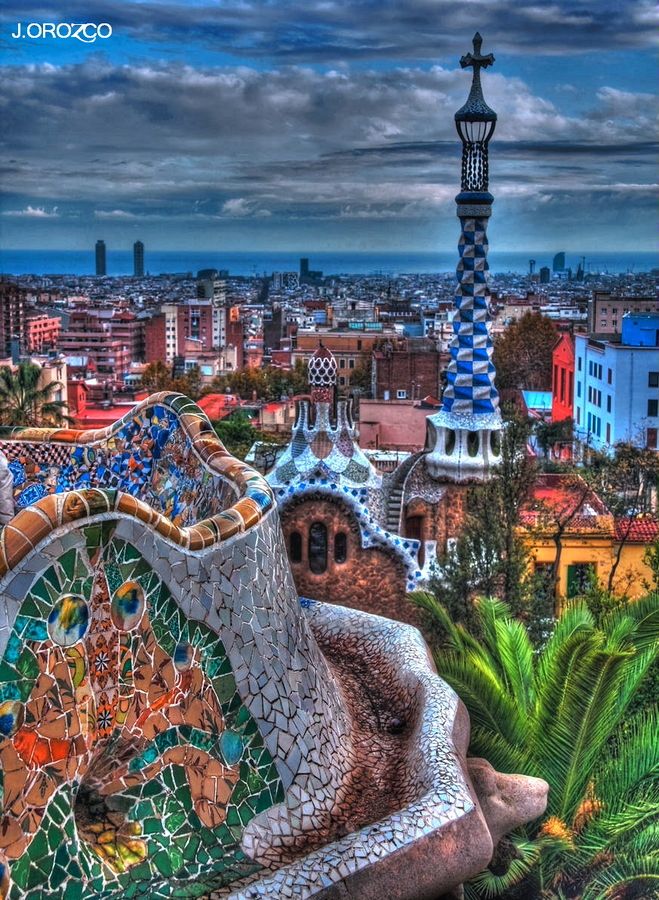
Learn more about it >>
Jardins de Joan Maragall (or del Palauet Albeniz)
The French landscape designer Nicolas Forestier designed this gardens around the Royal Pavilion of the 1929 World Fair. The premises were both a place for King Alphonse XIII to organize receptions as well as to rest during his stay. Nowadays it’s still used by the Royals and the local authorities for special events.
After the Fair the building was meant to host the Museum of Music, which is why often the gardens are called after the Musician Isaac Albeniz.
SALE
Adventures in Eden: An Intimate Tour of the…
SALE
Hidden Gardens of Spain
However, the project was never completed and in 1979, when the gardens were expanded, they were renamed after the Catalan poet Joan Maragall, to follow the trend of two other Montjuic parks named after poets: Mossen Costa i Llover and Mossen Cinto Verdaguer.
The park follows a classic and French style, with sculptures, ponds with water jets, waterfalls, staircases and avenues lined up with lime and magnolia trees. There’s also a unique specimen of jujube tree. The views over Barcelona are quite spectacular, too.
LOCATION: Hill of Montjuic. Pair it with a visit to the nearby Miro Foundation, the MNAC Museum or the Olympic Stadium.
OPENING HOURS: Saturday, Sunday and holidays, from 10AM to 3PM.
Learn more about it >>
Parc de la Tamarita
This garden is considered one of the first works of Rubió i Tudurí, back in the early 1900’s. It was the private garden of the Mata family, that sold it to the city in 1993. The manor is now occupied by the Blanquerna University.
BARCELONA FAMILY TOURS
The park is divided in two sections: the lower area is mostly dedicated to playground and leisure facilities, while the upper part is features the classic garden with fountains, ponds, sculptures and flower beds.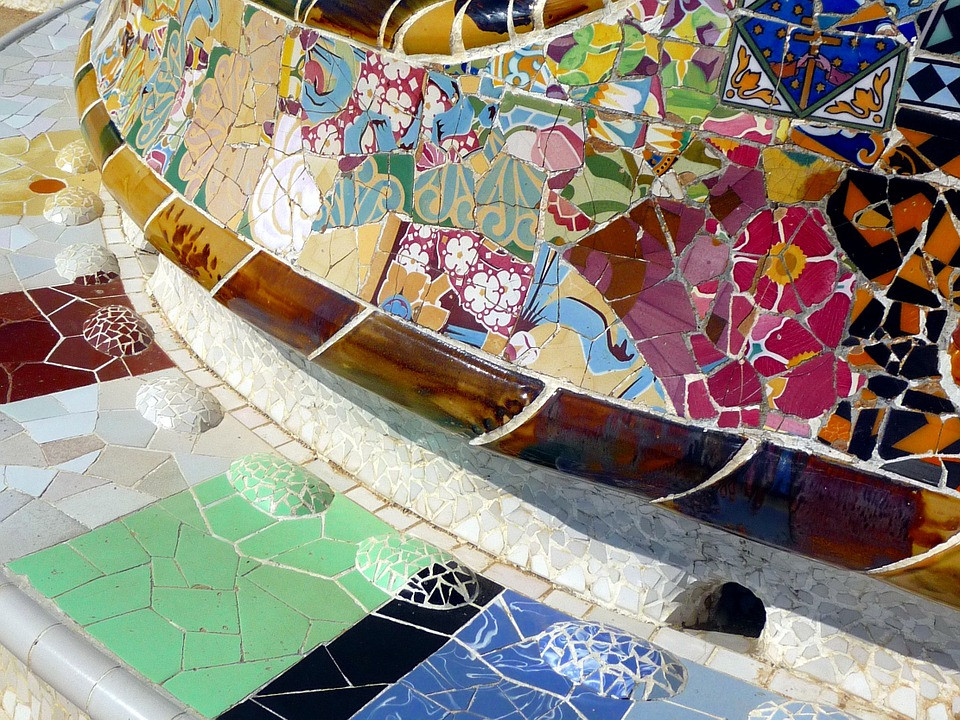
LOCATION: Sant Gervasi / Tibidabo district. Check it out on your way to the Tibidabo Hill or the Cosmocaixa Museum, or if you are eating in the Michelin star restaurant Abac.
Learn more about it >>
Botanical gardens of barcelona
The Encyclopedia Britannica describes a botanical garden as a collection of living plants designed chiefly to illustrate relationships within plant groups. Wikipedia adds that its goal is to collect, cultivate, preserve and display a wide range of plants.
Two of the parks I mentioned in the previous section match this description too: the Ciutadella Park and the University Gardens. But because of their architectural importance I preferred to include them in the parks section instead. Here are the other Barcelona botanical gardens:
Barcelona botanical garden
The “official” Botanical Garden of Barcelona is the creation of the architect Carles Ferreter and his team, has won several design awards since its opening in 1999, to substitute the Historical Botanical Garden.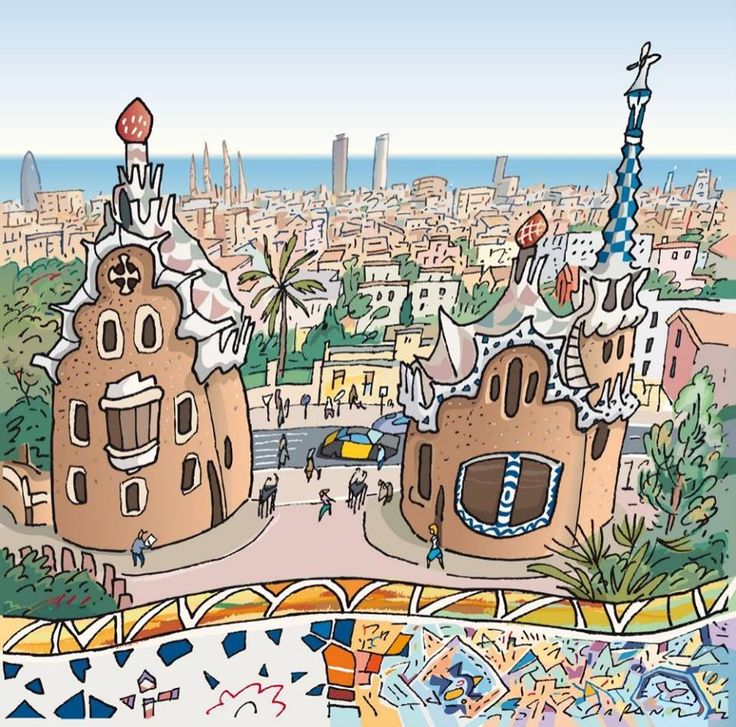
BARCELONA PARKS AND GARDENS TOUR
It specializes in Mediterranean species from all over the world. Because areas as distant to the Mediterranean Sea such as California, Australia, Chile or South Africa. have similar climates and their flora has evolved in similar ways to adapt to the environment.
Spring and Autumn are the best times to visit: Spring because it’s the blooming season of most species, and Autumn because of the berries and colors of the leaves – some yellow and brown, contrasting from the vivid green of the evergreen plants. Portuguese squills, Port Jackson Fig trees, aloes and banksias are some of its most remarkable specimens.
LOCATION: Hill of Montjuic. Pair it with a visit to the nearby Olympic Stadium.
PAID ENTRANCE. Check this city pass that includes it >>
Learn more about it >>
Historical botanical gardens
This little known botanical treasure is located in a hidden shady area in the premises of some old stone quarries.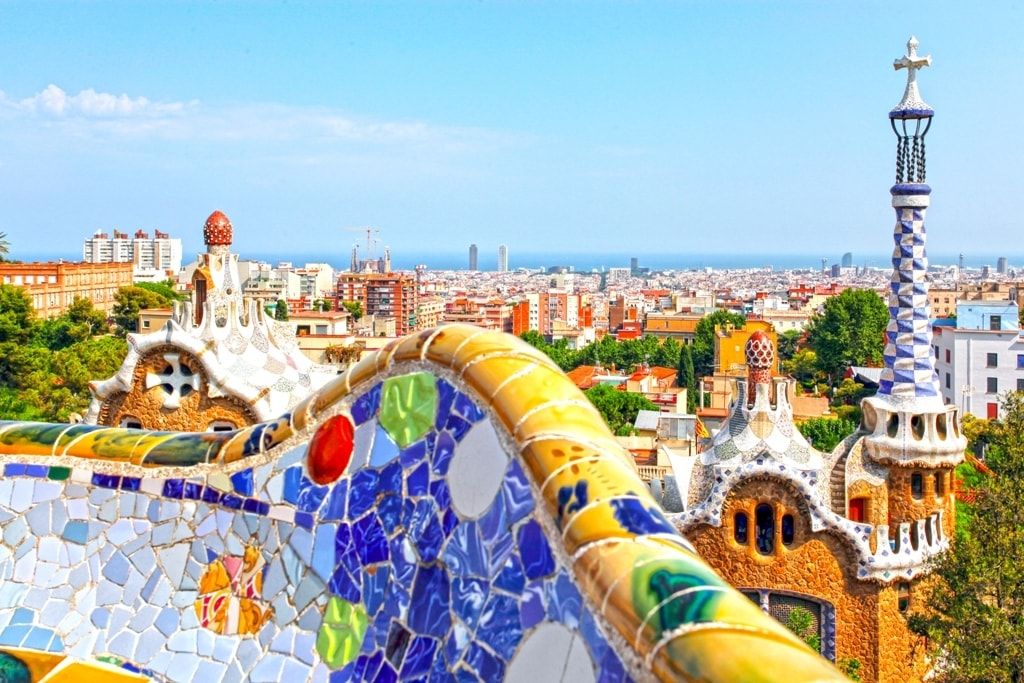
In 1930 the scientist Pius Font i Quer was charged with an ambitious project of a botanical garden in the old Foixarda quarries and beyond. Unfortunately, the Spanish Civil War started in 1936 and with the Franco dictatorship Font i Quer fell in disgrace.
In 1940 the pharmacist Antoni de Bolos took over the project, that would never go beyond the space of 2 quarries, only 20% of the original project. He introduced new plants, officially inaugurating the garden one year later. His main achievement was recovering an extinguished plant: the Lysimachia minoricensis, still present in the garden nowadays. Another interesting specimen is an old camphorwood.
In 1986 the construction works of the Olympic facilities nearby affected the stability of the quarries, and the botanical garden was closed to the public until it was reopened in 2003, four years after the inauguration of the new Jardi Botanic de Barcelona.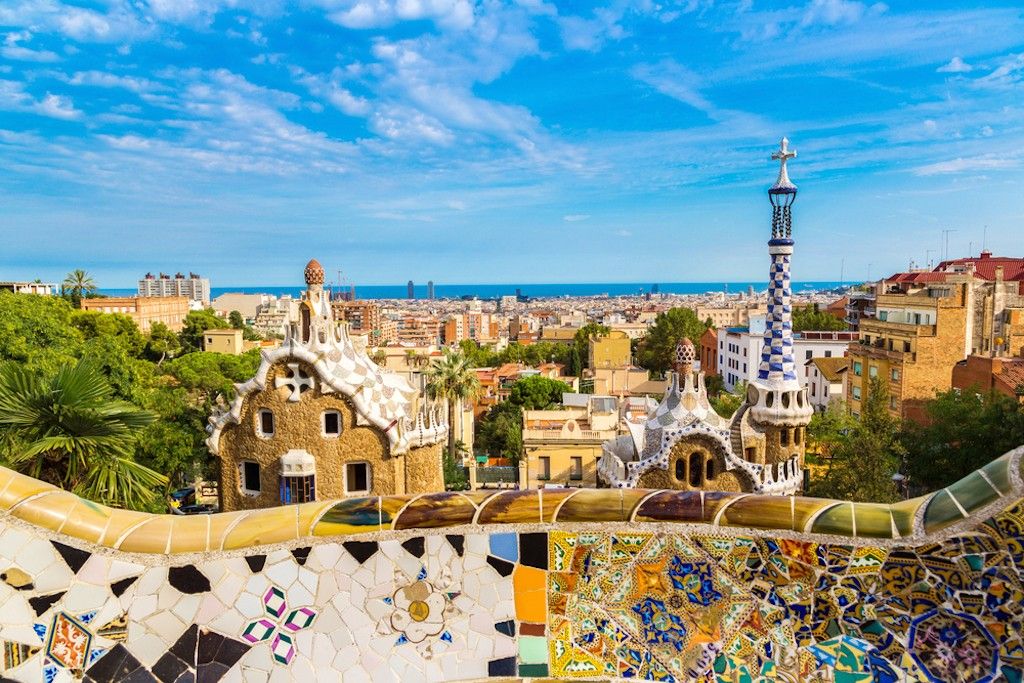
LOCATION: Hill of Montjuic. Pair it with a visit to the nearby MNAC Museum or the Olympic Stadium.
Learn more about it >>
Rosaleda Cervantes (Cervantes Rose Gardens)
The largest rose gardens in Barcelona has a surface of 9 hectares / 22 acres, almost half of that devoted to roses. Open in 1965, it features some 11,000 rose bushes from 2000 different species.
SEE THE ARTIGAS GARDENS BY GAUDI
May thru July are the best months to see the roses in full bloom, with a pick of some 150,000 roses blossoming simultaneously. However, the garden also incorporates species that bloom during other seasons of the year so visitors get to see roses no matter when they visit. Every year the garden organizes an international contest of new roses (hybrids), and the winner varieties are incorporated to the collection.
LOCATION: Pedralbes area. It is some 15 minutes walk from the Jardins de Pedralbes and 20 from the FC Barcelona stadium.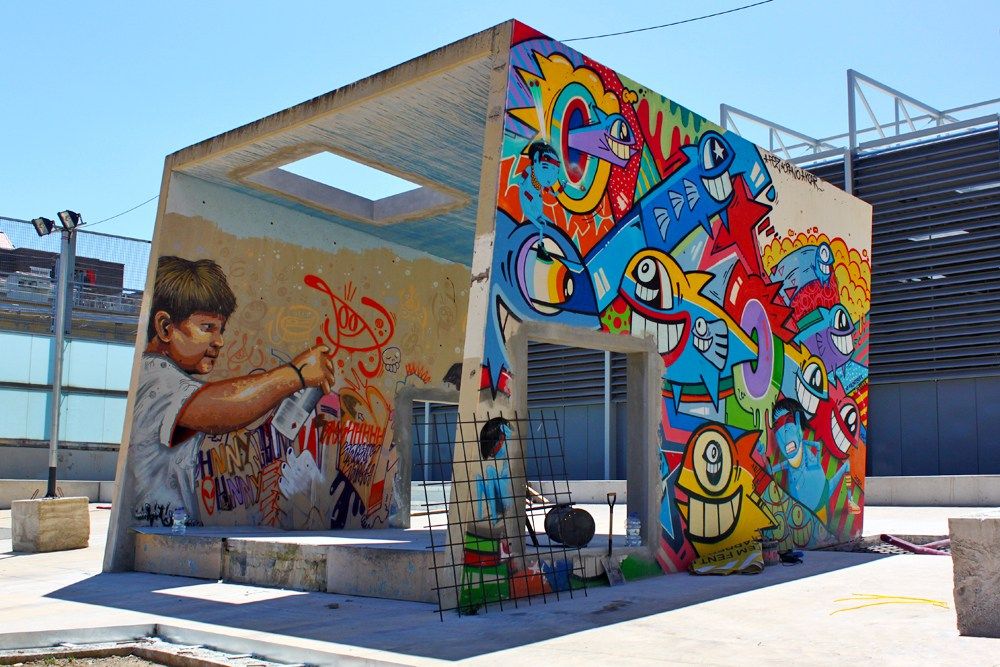
Learn more about it >>
Jardins de Mossen Costa i Llovera
The last botanical garden in Barcelona is a cacti garden. Located in the side of the Hill of Montjuic facing South and the Sea, the temperature is always higher than in the rest of the area, allowing the cultivation of plants from arid climates.
TOUR THE CONTEMPORARY PARKS OF BARCELONA
The garden is the result of the efforts of the architect Joaquim Maria Casamor and the cacti specialist Joan Pañella, and they were inaugurated in 1970. In 1987 the New York Times included it in their list of 10 best parks in the world – which was an honor considering that the last couple of winters had been considerably cold and around 40% of the collection hadn’t survived the low temperatures.
Don’t miss the forest of giant Euphorbia, the Dracaena Dragos, the many aloes, the Australian Xanthorrea that need wildfires to reproduce, and the huge echinocactus – that Mexican call “mother-in-law chairs”.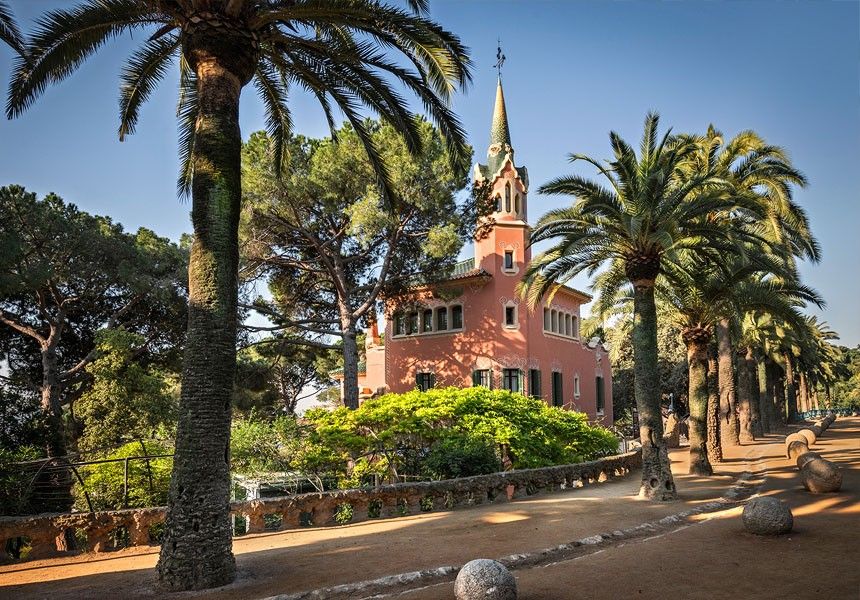
LOCATION: Hill of Montjuic. Take the Aeri del Port cable car to reach it, and enjoy lunch with views over the port at the nearby Martinez restaurant.
Learn more about it >>
Our recommended Barcelona hotel for garden lovers:
What are your favorite Barcelona parks and gardens?
Facebook Icon
Linkedin Icon
Youtube Icon
Pinterest Icon
Instagram Icon
AUTHOR BIO
Marta is the founder of ForeverBarcelona. She is a passionate tour guide that loves Barcelona and loves writing too. She is the main author of our Blog, and is committed to sharing her knowledge about Barcelona and her best tips with our readers.
RESEARCHING FOR A TRIP IS TIME-CONSUMING…
Need more inspiration?
Our 100% FREE Barcelona Collection will give you everything you need to organize the trip of your lifetime to Barcelona.
BEST INSIDER TIPS FROM THE PROS!
MORE BARCELONA TIPS FOR YOU:
SHARE WITH YOUR TRAVEL MATES
Last update on 2023-04-25 / Affiliate links / Images from Amazon Product Advertising API
Barcelona Parks – GoSpainToday – Holidays in Spain
Harmony is what comes to mind when you spend the day walking around the city and relaxing in a shady park.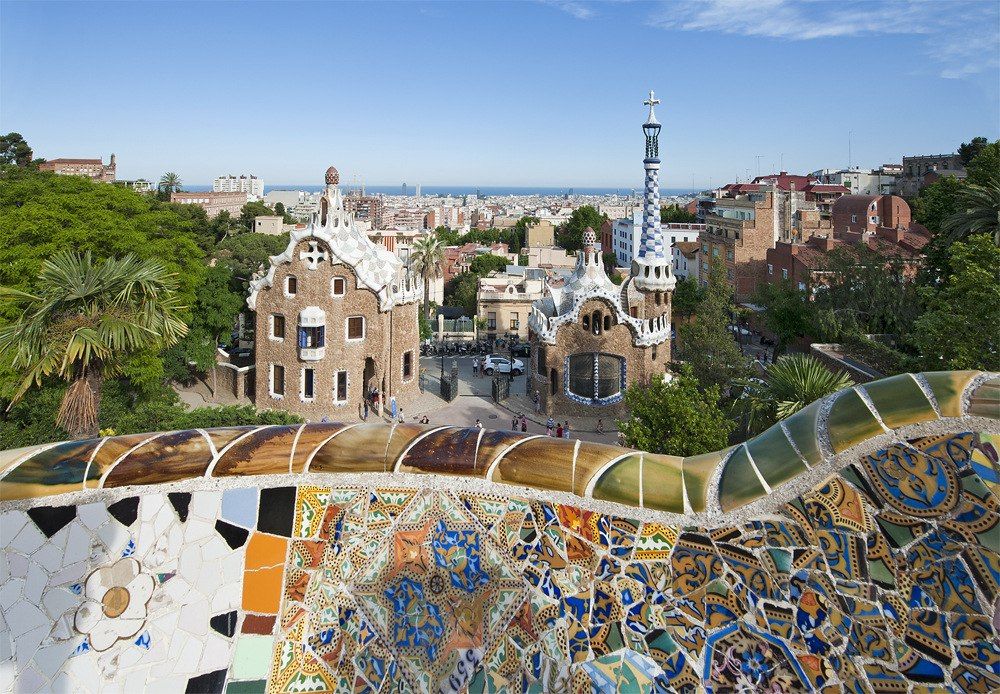
True, the parks in Barcelona are just as much of an attraction as the architecture! The choice is huge – 70 city gardens and parks that simply shine with cleanliness and are surrounded by greenery.
Parque Güell
One of the most famous sights of the capital of Catalonia. A masterpiece created by Antonio Gaudi, located in the upper part of the city. Architect built at 1914 year park, which is a monument of architecture and garden art. And in 1984 it was recognized as a UNESCO World Heritage Site.
The symbol of the park is the Salamander, made in the form of a mosaic. The whole park is bright landscapes and landscapes that intertwine with each other. But not only they amaze with their beauty, but also the buildings, which, according to Gaudi’s idea, strongly resemble fairy-tale caves.
Do not pass by the mosaic benches, sitting on which you can make a wish.
And, of course, original fountains and a front snow-white staircase delight the eye in the park.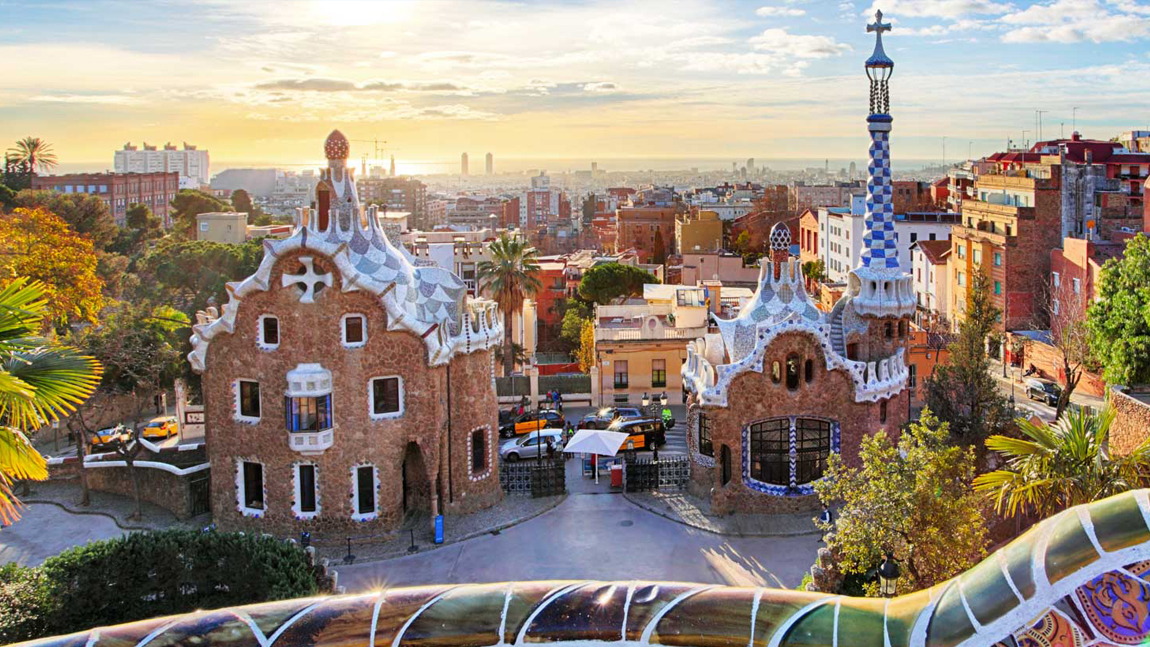
In the park you can visit the Gaudí House Museum.
Barcelona, Carrer d’Olot, 5
Parc del Guinardó
The park is next to Parc Güell. It is divided into city park, historical and forest.
Civil war shelters are located here.
There is also a story that tells about a labyrinth with secret passages located right under the park. It was along them that the bandits of the 16th century made their way to get into the Gothic quarter of the city.
Barcelona, Calle Garrida I Rock, 1-13
Ciutadella Park ( Ciutadella )
The park was built by Philip V in the 18th century. Catalonia, museums of geology, modern art and zoology, Castle of the Three Dragons, zoo and chapel.
You can ride a boat on an artificial lake and admire the waterfall. Or relax in the shade of palm trees and orange trees.
Fountains, ancient sculptures and flowers – you will see all this in this famous park.
Walking through the Winter Garden, you can go to one of the cafes located on the territory of the Citadel.
Barcelona, Passeig de Picasso, 21
Parc del Laberintd’Horta
Former estate of the Marquis Desvalls, the park was created in 1791 year. This is the oldest park in the city, which is also very well preserved.
Sea of greenery, cypresses, waterfalls, canals, pavilions and sculptures. The dominant feature of the park is a labyrinth of greenery, in the middle of which is a statue of Cupid.
There is a belief that whoever goes through the labyrinth the first time and touches the statue will be lucky in love!
Barcelona, Passeig del Castanyers, 1
Gardens Sentmenat (Jardins de Can Sentmenat)
Representative of the classical gardens created by the Catalan aristocracy.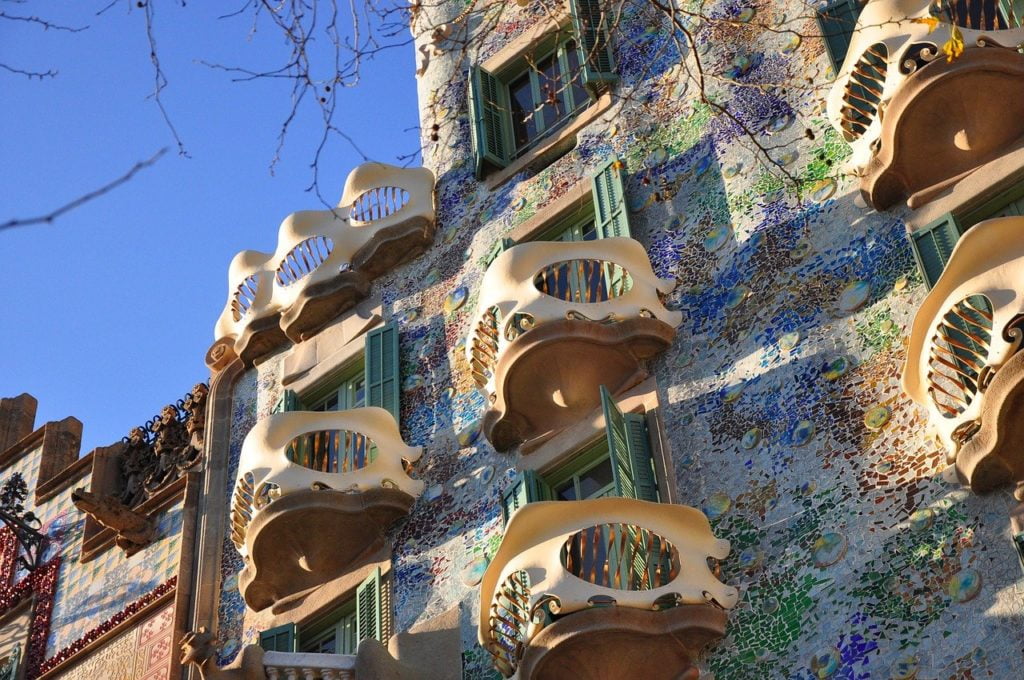
In the French-style park, the former residence of the Marquis de Saintmenat has been preserved, as well as life-size sculptures of women. They are located on the path connecting the two ends of the garden, in the shade of luxurious trees.
The mountain offers beautiful views of Barcelona.
Barcelona, Passeig de Picasso, 21
Gardens of the Royal Palace of Pedralbes
(Jardins del Palau de Pedralbes)
Historic residence of the royal family in Barcelona. The park of the beginning of the 17th century is located on Montjuic mountain.
There is a pond, fountains, a waterfall, Mediterranean trees, gazebos. As well as sculptures and statues by the famous Gaudi, among which Hercules with a dragon stands out.
There is a palace in the park, next to the square, the central place is occupied by sculptures of Queen Isabella II with her son Alfonso XII in her arms.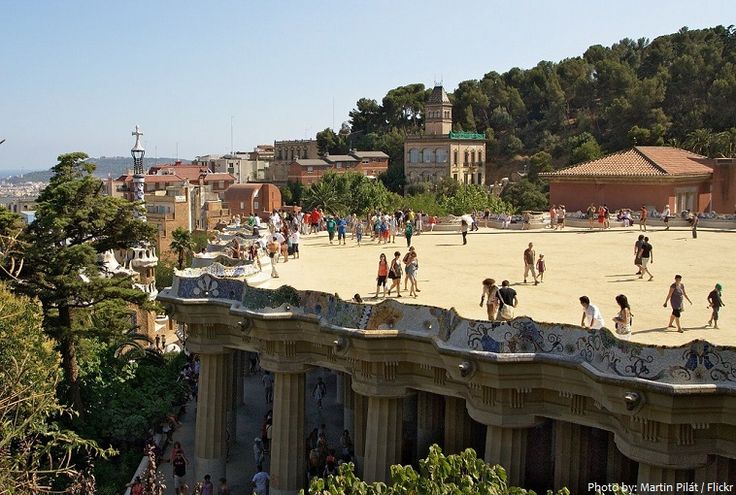
Barcelona, Av. Miramar, 30
Parc de Cervantes ( Parc de Cervantes)
A festival is held here for those who plant roses. There is a competition for the most beautiful flower.
150 thousand roses are brought here from all over the world! And all this splendor in the recreation area, surrounded by fountains.
Barcelona, Av. Diagonal, 706
University gardens (Jardins de la Universitat)
The park is of botanical value, many kinds of flowers are collected here, as well as trees, some of them the oldest in the city. The first plantings appeared thanks to students in the 19th century.
In the park you will see the building of the monastery, ponds with rare aquatic plants and goldfish.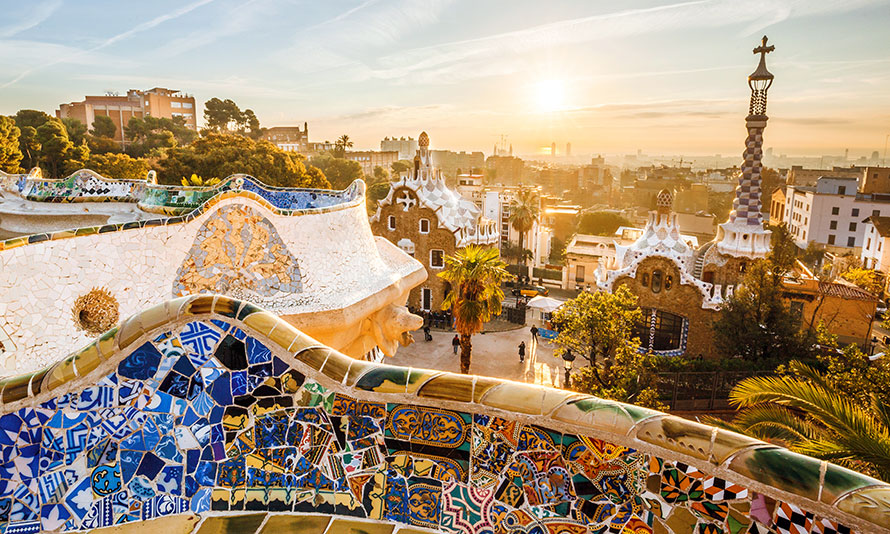
Barcelona, Gran Via de les Corts Catalanes, 585
Gardens and parks of Barcelona ~ Guide in Barcelona Sofia
Barcelona is an interesting and multifaceted city. Each traveler will be able to choose a route according to their interests and preferences. Historical and thematic routes, gastronomic, artistic routes, all this and much more awaits you in Barcelona.
Gardens and parks of Barcelona
All the gardens and parks of Barcelona have their own history and their own unique charm.
From the most popular to the least known, their origins, origins, infrastructure, all urge the traveler to discover their amazing atmosphere.
A city without parks
Looking at the luxurious, verdant gardens and parks of Barcelona, it is impossible to believe that there was not a single public park in the city until the middle of the 19th century. The gardens were privately owned, and were broken only in the residences of the rich and noble residents of Barcelona.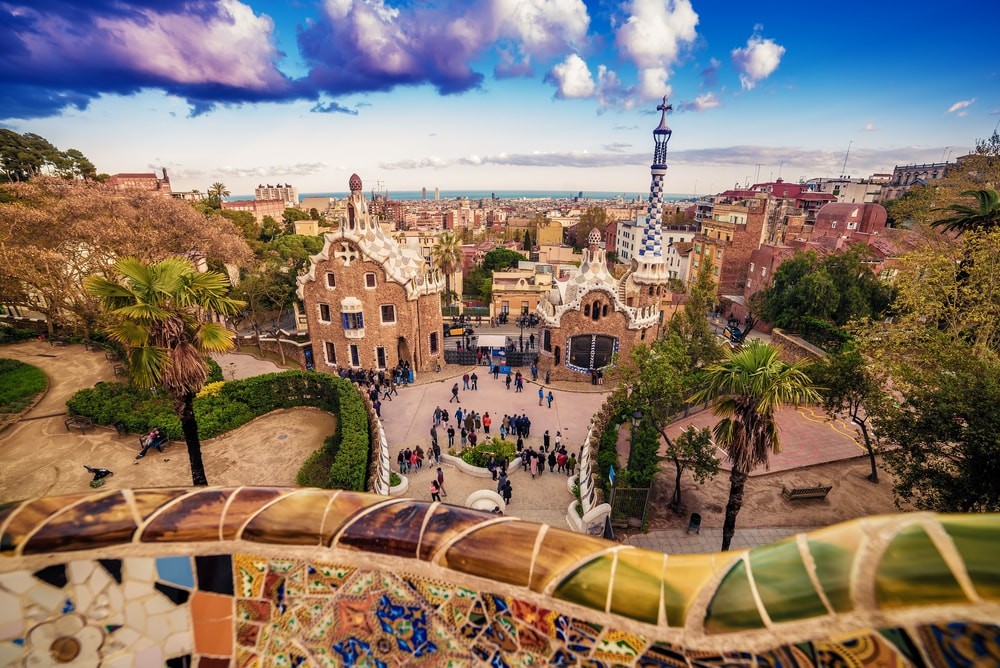
The city’s first park was opened in 1872, the Situtadella Park. Since then, dozens of green oases have been created that have turned Barcelona into a flourishing city.
Barcelona parks can be divided into four categories:
- forest parks
- theme parks
- city parks
- historical parks
They have everything you need for a great holiday, you can walk, play, play sports, have fun with your family, enjoy nature and even swim in them.
The most famous forest parks of Montjuic and Collserola, both of these parks are formed by numerous gardens, frame Barcelona on both sides, they can rightly be considered the “lungs” of the city.
Theme parks tend to concentrate either on a particular type of plant, such as a cactus park or a specific theme, Joan Maragay Park with its wonderful collection of sculptures. Of particular note is the Barcelona Botanical Garden with its rich collection of Mediterranean flora.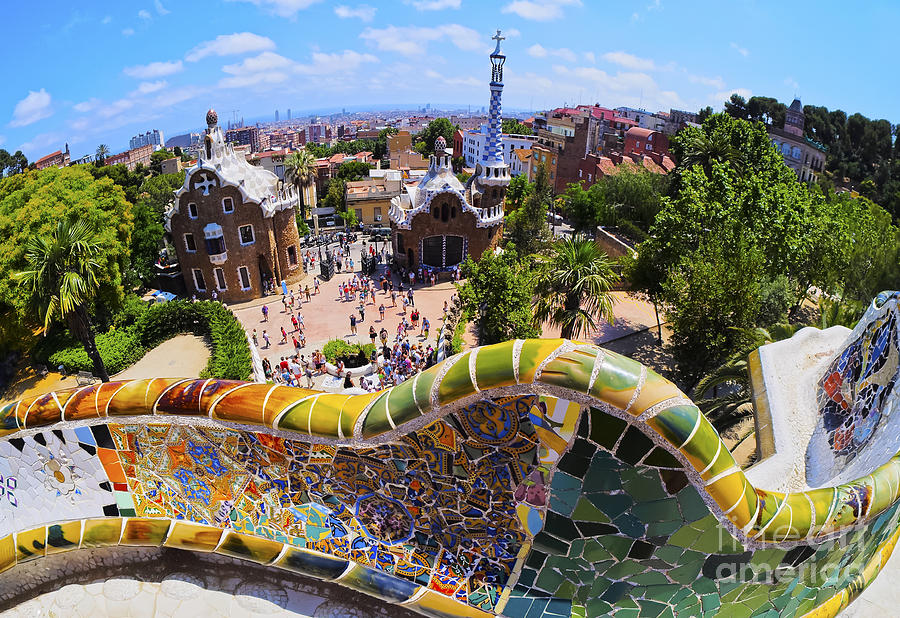
The historical parks of Barcelona are associated with private commissions or important cultural and historical events that took place in the city, such as the University Gardens, which were laid out on the occasion of the World Exhibitions held in Barcelona.
Gardens and parks of Barcelona, commissioned by private individuals, first of all it is worth mentioning the Orta Labyrinth Park , owned by a wealthy aristocratic Barcelona family, or the parks of the Pedralbes Palace , which arose on the occasion of the official visits of King Alfonso XIII, and as well as the world-famous Park Güell, created by the brilliant Antonio Gaudi, commissioned by Count Eusebi Güell.
City parks are a relatively new phenomenon, built in the young areas of Barcelona, such as the Poble Nou park.
Barcelona Gardens and Parks Self-Guided Tour
Barcelona has truly idyllic parks, such as Laribal Gardens (jardines de Laribal) .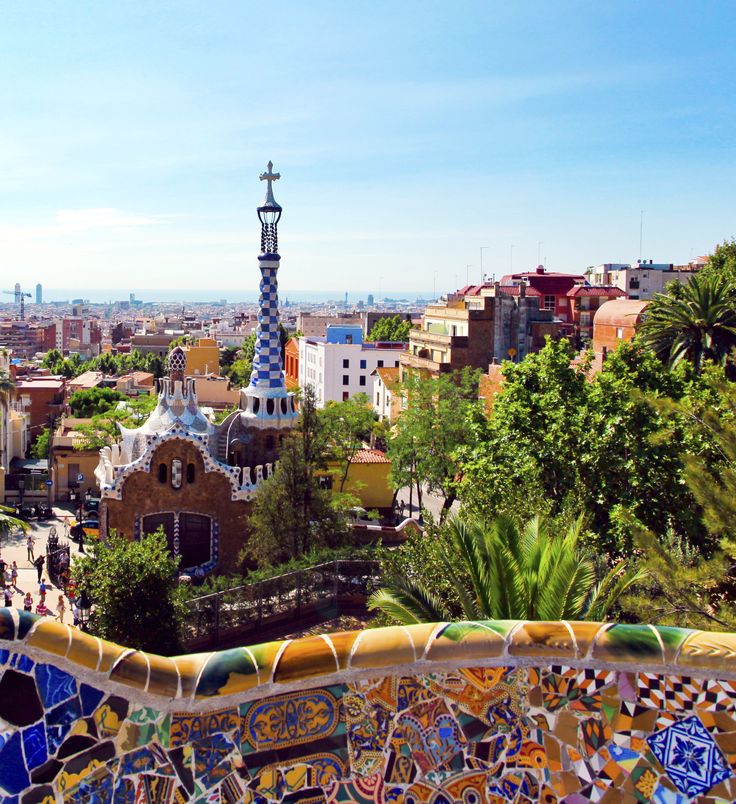
Font del Gat
This park is considered to be one of the real gems of the Montjuïc hill, a uniform style is maintained throughout the territory, which makes walking through the park a real pleasure. Silence, tranquility, bright greenery and flowers make this place a real paradise in the center of a big city. The creation of this park was timed to coincide with the International Exhibition 1929 years old The famous gardens of the Generalife Gardens served as inspiration for this park.
Gardens of Cecilia and Amelia
Made in the classic French style, these gardens are almost a regular quadrangle, resulting from the merger of the park area of two former estates. It happened in 1969, when the gardens were opened to the public. In the 19th century, there was a large estate here, owned by Ignacio Girona, the gardens were named after his beloved wife.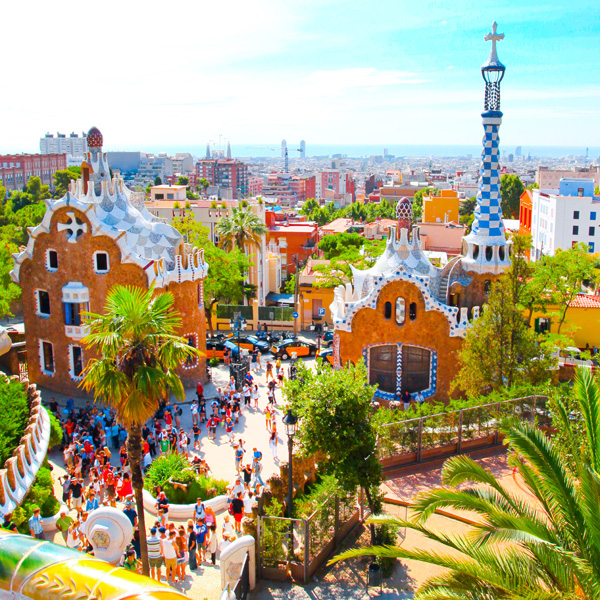
A large park area, just made for leisurely walks: high cypress hedges, charming ponds overgrown with water lilies, well-groomed flower beds. There is a playground for children’s games, picnic areas and quiet rest.
Park sculptures are also worthy of attention, especially the Dryad sculpture by Ricardo Serra.
Tamarita Gardens
Tamarita Gardens, safely hidden from the noise of the city behind a stone wall, is a great place for a quiet romantic stroll.
Divided into two parts, they are an expressive contrast between the orderly classical part and the riot of nature.
Located near the Paseo San Gervasi, they are located around the former residence of the industrialist Alfredo Mata. It was one of the first projects of the landscape designer Nicolau Roubaud and Toudry.
Gardens – an enclosed space filled with decorative elements, among which fountains, springs, small artificial ponds play an important role.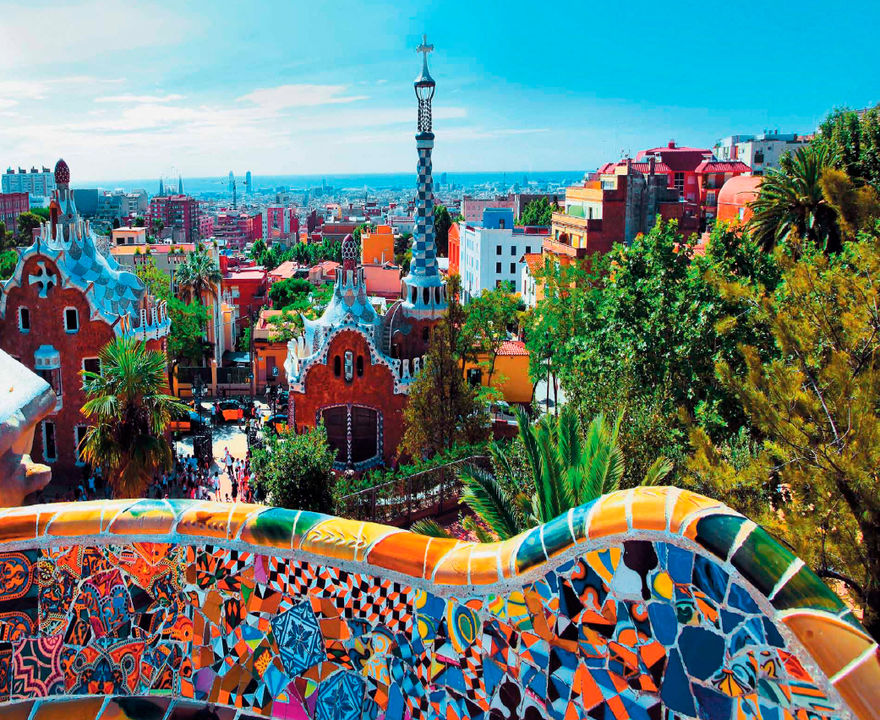
In the classical part of the garden there is a combination of rose bushes in the French style and boxwood, an arbor with an architectural allegorical image.
In the center of the park there is a large meadow, with a hundred-year-old oak, 23 meters high, from this meadow a path leads to the wildest part of the garden.
The magnificent vegetation and stone walls that surround the space give these gardens a sense of security and peace.
Gardens of the Palace of Jerez
The gardens of the Palace of Jerez are a magnificent example of the Renaissance style. The garden is replete with magnificent sculptures, ponds and fountains.
Built next to the palace at the end of the 19th century by the architect August Font i Bega, commissioned by industrialist Josep Gallart Forgas, gardens with tall palm trees and other magnificent plants such as magnolias, acacias, cedars, orange trees, holm oaks, are especially beautiful in spring during the flowering period .

